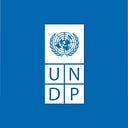Groundbreaking data tackles child malnutrition in Honduras

When young mother Silvia Barrera brings her son to the community health centre in Tomalá, Honduras, she is one of many parents who pay close attention to her child’s growth. “The last time he weighed five kilos, now he weighs six,” she says.
Tomalá is in Lempira in western Honduras, which has the highest rate of chronic child malnutrition in the country and well above average for Latin America. The region is also experiencing increased and longer-lasting droughts from rising temperatures, making it harder for people to grow and sell crops to feed their families.
Child malnutrition is a complex issue rooted in social, economic and environmental factors. “The challenge for us as a community is to join forces,” says Dr. Teresa de Jesus, who works at the health centre. “Focusing only on health will not work, family income and housing conditions also limit a child’s development and increase the risk for undernourishment.”

To support families like Silvia’s, Honduras is partnering with the UN to design integrated development solutions that tackle the many issues which contribute to malnutrition, boosting progress across the Sustainable Development Goals (SDGs).
Integrated data analysis
UNDP provides a key contribution with the ‘SDG Combo’ — that address all aspects of a multi-dimensional development challenge like child malnutrition.
Groundbreaking ways of collecting and combining data underpin this work. Feedback from people on services, data from NGOs, satellite data and the so-called geo-referenced administrative registries that collect hundreds of exclusion indicators to help map the needs of millions of people.
With this comprehensive view, the ‘combo’ zooms in on the deepest pockets of poverty where people are at risk of being left behind. In Lempira, this analysis uncovers how education, land degradation, infrastructure, housing and job opportunities are connected and how they lead to undernourishment.

This is how Honduras has put in place social protection policies for children and their families. The systems monitor the child’s health and respond to their needs, for example through improving housing conditions and supporting families with essential resources like refrigerators to preserve food.
This is how Olga’s house was selected to be equipped with a new floor and ceiling. “I was so worried the roof would fall. But with this new home, I can save on maintenance and spend more on my children,” she says.
Esperanza López, mayor of Tomalá, believes in this integrated approach to fighting child malnutrition. Her municipality has adopted a strategic development plan that is aligned with the 2030 Agenda and works with a ‘combo’ of actions to make sure every child is well nourished.
“What is our dream? It is to free our people from the poverty trap, because if we do that, we can change their lives forever,” she says.

To learn more about integrated solutions, click here.
Story: Catharina Klingspor and Ariana Caruso, UNDP
Photos by UNDP Honduras/José Mario Lagos
